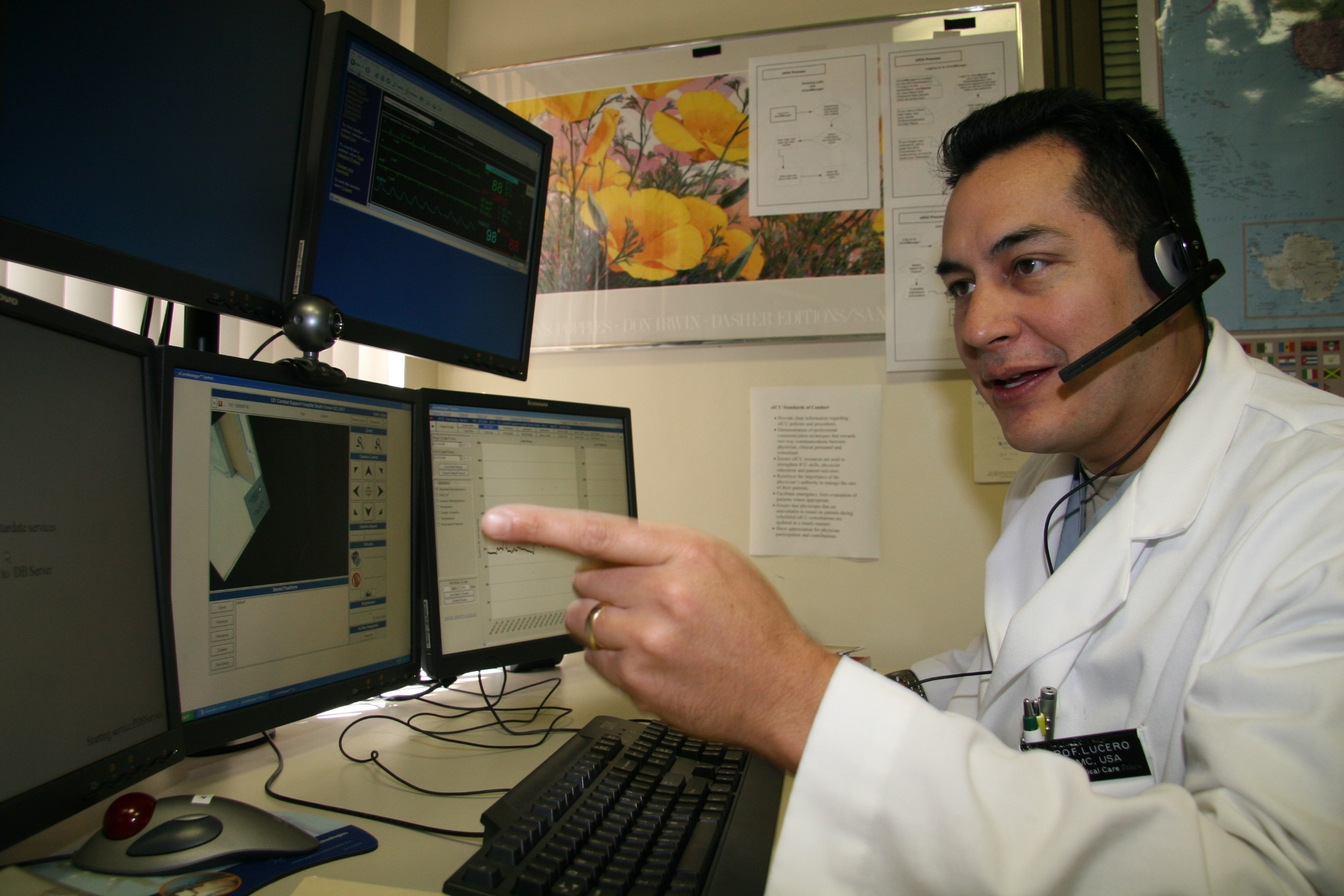TRIPLER ARMY MEDICAL CENTER, Hawaii - High above the shimmering Honolulu skyline flanked by Diamond Head crater in clear sight to the east, perhaps a more impressive view from the hospital atop Moanalua Ridge is inside an unassuming office on the sixth floor and offers a glimpse into the future of military medicine.
Doctors in the intensive care unit here are using telemedicine technology called "electronic ICU," or eICU, to care for critically ill patients at U.S. military bases thousands of miles across the Pacific, helping save lives and reduce medical evacuation costs in the process.
With high-resolution cameras fed into a bank of computers with real-time transmissions, critical care specialists here can examine, diagnose and monitor intensive-care unit patients in conjunction with bed-side local doctors at U.S. military installations in Guam and Korea, where the program is installed.
"We are able to provide an enhanced level of care to deployed active-duty military members, their families, and other beneficiaries with this program, allowing remote hospital intensive care units access to our medical specialists," said Lt. Col. (Dr.) Eric Crawley, the eICU program director here.
Tripler is the first military medical center to use this telemedicine technology for long-distance ICU care.
"We have the expertise and the capacity to participate in the care of those patients, and I think this system is a great way of projecting that expertise to those smaller facilities," said Dr. Benjamin Berg, an intensivist at the University of Hawaii's Telehealth Research Institute. Berg, a retired Army colonel who was instrumental in bringing the electronic ICU program to Tripler in 2003 while on active duty here, is now an eICU program consultant in a partnership between the University of Hawaii and Tripler.
Critical patients at either U.S. Naval Hospital Guam or U.S. Army Hospital Yongsan in Korea can be stabilized under the direction of intensivists at Tripler using this system, Berg said, possibly eliminating or delaying the need for air evacuation at a cost of more than $100,000. If need be, stabilized patients can be brought to Tripler on a regularly scheduled medical flight mission when they are in better condition to fly, saving money and resources.
The fiber-optic, internet-based technology was used during a boiler room explosion on the Guam-based submarine tender USS Frank Cable in December 2006. The ability of surgical and critical care specialists to remotely examine and triage the sailors helped with the initial stabilization and evacuation of the severely burned Sailors from the hospital in Guam to Brooke Army Medical Center in San Antonio, Texas.
"This program has provided the hospital's physicians, particularly in the intensive care unit, immediate access to critical care specialists, such as cardiologists and pulmonologists, at Tripler," said Lt. Robert Krejci, U.S. Naval Hospital Guam's eICU program manager. "It's available to physicians on a 24-hour basis and has improved our ability to provide patients here with a higher standard of care.
The consulting doctors at Tripler are able to quickly view a patient's chart, labs, and other data, as well as directly see the patient using a video camera, simulating a near hands-on practice of medicine, he said.
In the future, the telemedicine technology may be used to bring the expertise of Tripler's specialists to patients aboard ships at sea, or in forward deployed locations such as field hospitals, Crawley said.
Tripler is the largest military medical treatment facility in the Pacific. The hospital's area of responsibility spans more than 52 percent of the earth's surface. It is the only Army medical center in the Pacific.


Social Sharing